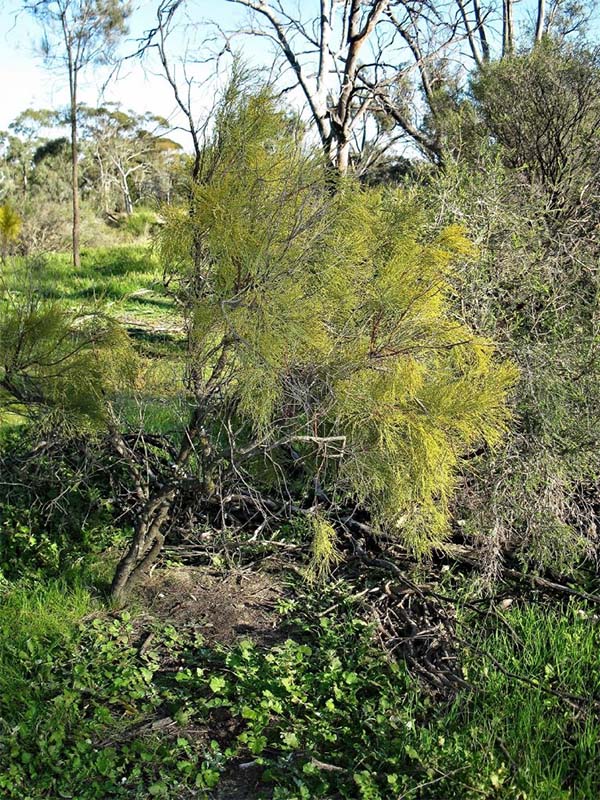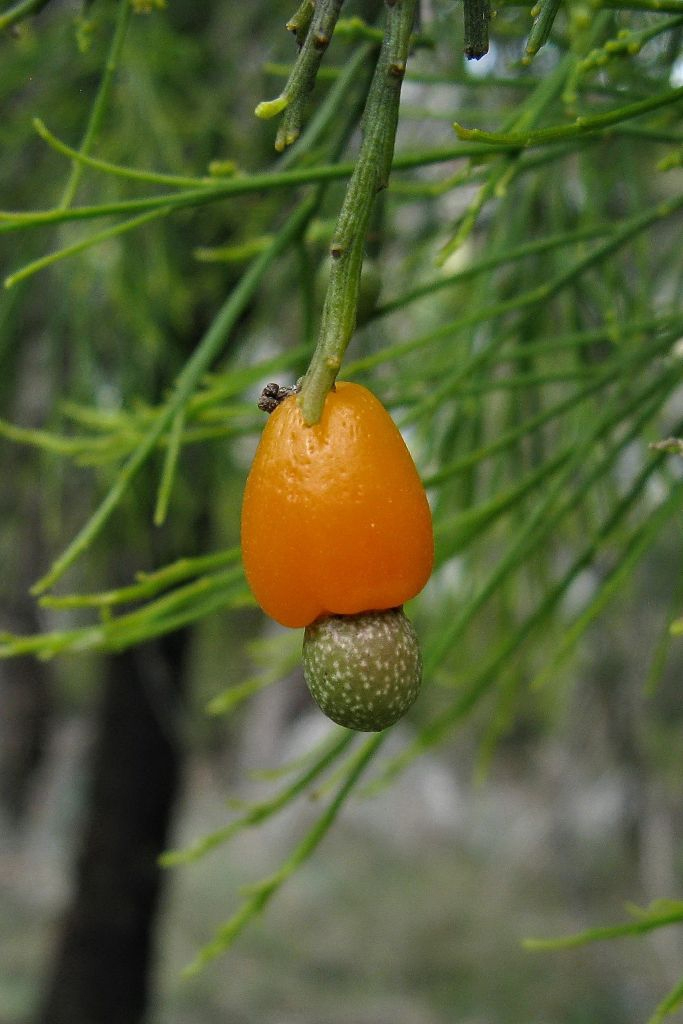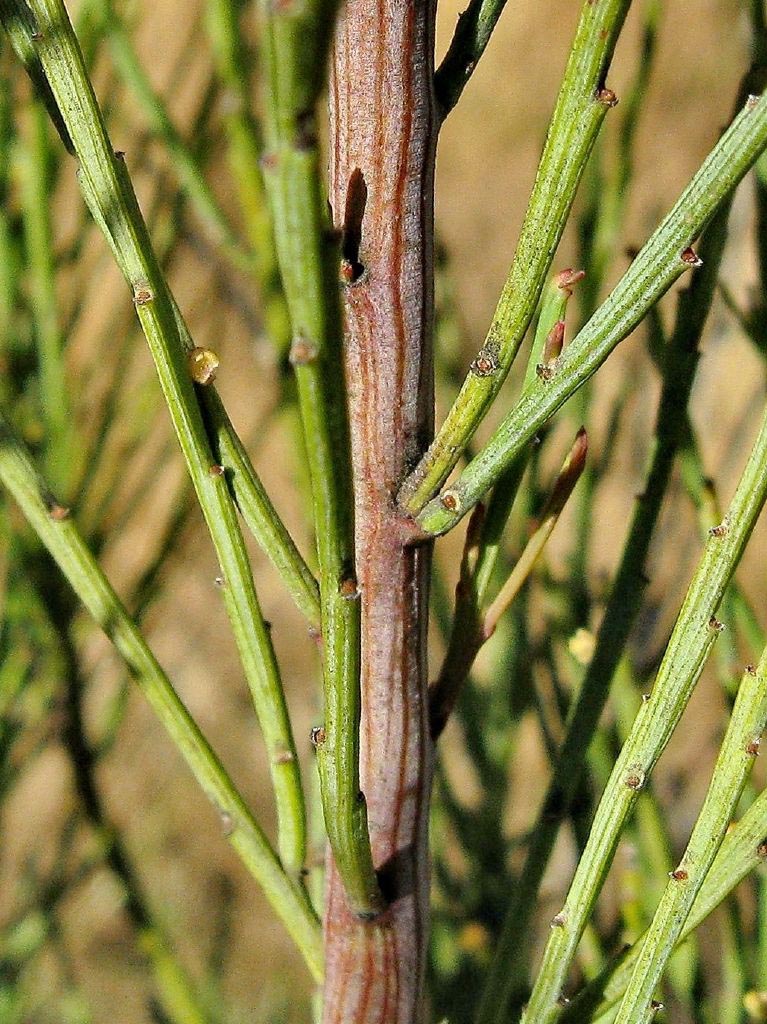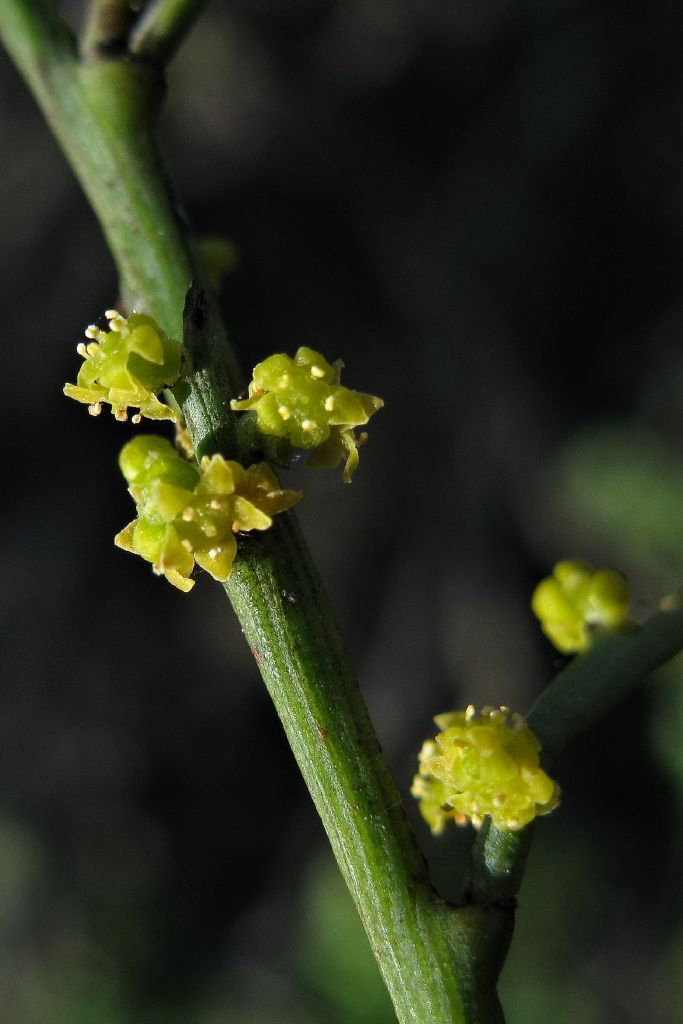Fruits/Seeds
Globular, small, hard, greenish inedible nut at the end of a swollen orange to red stalk.
Field Guide
Improve your identification skills. Download your Cherry Ballart field guide here!

Shrub or small pyramidal tree, yellowish green or bronzy. Commonly 8 - 10 m high.
Numerous branchlets are hairy and flaky at first then become smooth and straight.The swollen orange to red stalk preceding the small hard fruit is often mistaken as the fruit itself.
Scale-like, triangular, 0.5 mm long and 2 – 3 mm long on new growth.
Yellow-green flowers in short, dense, clusters that are usually 6 mm long. Flowers appear in early spring to autumn (September to May).
Globular, small, hard, greenish inedible nut at the end of a swollen orange to red stalk.
Improve your identification skills. Download your Cherry Ballart field guide here!

First fully open single flower
Full flowering (record all days)
End of flowering (when 95% of the flowers have faded)
No flowering
Fruits/Seeds (records all days)


Pale-Fruit Ballarat (Exocarpos strictus) is much small at 3.5 m high and light green, bronzy, blue-green or greyish in colour. Flowers in short cluster of 2 – 6. Fruits oval, 2 – 7 mm long, red, white or mauve, succulent. Found in Victoria, Tasmania and South Australia.